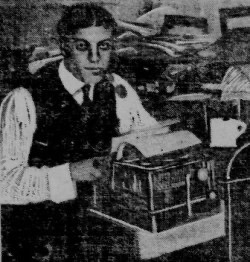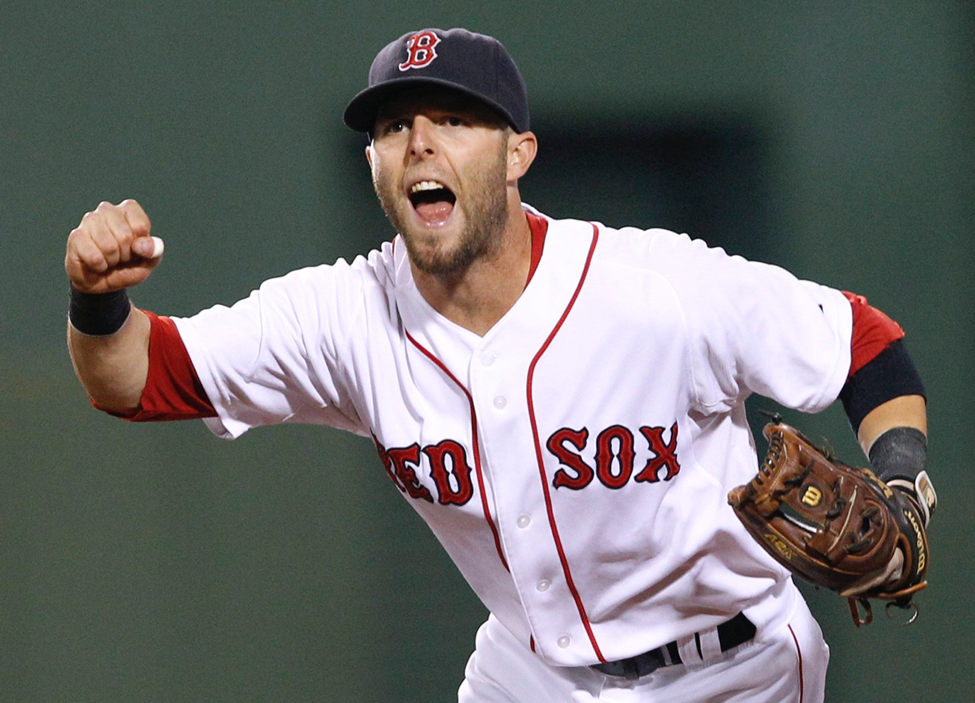Average Numbers for National Baseball Hall of Famers: Shortstops
- John Butler

- Apr 15, 2022
- 6 min read

With 3,420 hits, 8 NL Batting Titles and 6 Slugging Percentage Titles, Honus Wagner is considered the greatest shortstop of all-time who led the Pittsburgh Pirates to win the 1909 World Series over his eventual Hall of Fame classmate Ty Cobb and the Detroit Tigers in 7 Games. Photo by Getty Images Copyright: 2006 Mark Rucker/Transcendental Graphics
Jack Butler
Shortstops have been known throughout baseball’s 153-year history for their contact and defense while having the range to field balls hit back up the middle. It all began with Honus Wagner in the turn of the 20th century with the Pittsburgh Pirates where he captured 8 NL Batting Titles over a 12 year stretch from 1900 to 1911. Wagner drove in over 100 runs 6 times and led the NL in stolen bases on 5 occasions during that period. The only knock on the Flying Dutchman is his defense as he committed 676 errors at shortstop – the 10th most at position in MLB history.
In the 1940s, the game had Luke Appling and Lou Boudreau commanding short for the Chicago White Sox and Cleveland Indians. Appling played his entire 20-year career on the south side of Chicago, collecting 2,749 hits and 2 AL Batting Titles who never reached the postseason. Boudreau on the other hand, experienced October baseball leading the Cleveland Indians to a World Series Championship over the Boston Braves in 1948 as player-manager. That season Boudreau took home the AL MVP after 199 hits, 18 home runs, 106 RBI, and hitting .355 with a 10.4 WAR.
The 1950s saw the first power threat at the position in Ernie Banks who won back-to-back NL MVPs in 1958-59, becoming the first African American player to win the award. Mr. Cub hit 269 of his 512 home runs at shortstop with his total being the second most home runs by a Cub behind Sammy Sosa’s 545 homers.
Robin Yount, and Ozzie Smith were the faces of the position from the late 70s to the 1990s playing for two Midwest teams in the Milwaukee Brewers and St. Louis Cardinals with each club sporting fine powder blue jerseys. Yount had 210 hits, 29 home runs, 114 RBI, and hit .331 to win the 1982 AL MVP and led the Brewers to their first and to date only World Series where they faced Smith and the Cardinals only to fall in 7 Games. The Kid would take home a second MVP in 1989, but this time at centerfield to become the third player to have won the award at different positions. Smith was a wizard at short over his 19-year career, winning 13 Gold Gloves, had 239 Total Zone Total Fielding Runs Above Average at SS, and a career 44.2 dWAR which is the highest mark of all-time.
Cal Ripken Jr. was a wonderful shortstop of the 1980s to 1990s whose durability and desire to play was unmatched as he played in a record 2,632 consecutive games from May 30, 1982, through September 19, 1998, to become baseball’s “Iron Man.” Ripken won the 1983 and 1991 AL MVPs with a 35.7 career dWAR and hit .336 lifetime with 1 HR and 8 RBI in 28 postseason games. In Ripken’s age 35 season, Barry Larkin was a year removed from winning the NL MVP and taking the Cincinnati Reds to NLCS while Derek Jeter put himself on the map winning the 1996 AL Rookie of the Year and began the New York Yankees dynasty by winning the Fall Classic that year.
Jeter was a tremendous hitter who did it in the clutch with 200 hits, 20 HR, 61 RBI, and a .308 BA in 158 playoff games, but is the one of worst defenders of all time even if he has the “Flip Play” or the “Jump Throw.” Number 2 has a career -9.4 dWAR, -165 Defensive Runs Saved, and a -186 Total Zone Total Fielding Runs Above Average. Despite those metrics, Jeter still won 5 Gold Gloves. Because of these advanced metrics, believe that Jeter is overrated as he played for the Yankees in the biggest media market, never experienced a losing season, and the fans along with the media showcase “The Flip Play” and his jump throw to bring up that he was a “good” defender.
Now that we’ve looked at the history of baseball’s best shortstops, let’s examine the average numbers needed to be enshrined into the National Baseball Hall of Fame. First with WAR, the average is 64.7 being met by 8 of the previous 11 members. Wagner’s 130.8 WAR is the highest while Phil Rizzuto’s 42.2 is the lowest of any MLB player inducted. Percentage of games played at SS sits at 79% with 16 of the 26 enshrined exceeding it. Regarding defense, shortstop is the hardest position and 10 played it better than any other in the games history. Ozzie Smith, Mark Belanger, Cal Ripken Jr., Joe Tinker, Luis Aparicio, Rabbit Maranville, Omar Vizquel, Bobby Wallace, Bill Dahlen, and Art Fletcher all have a dWAR higher than 28.3 which makes up 10 of the top 12 on the career dWAR list.

These 10 shortstops were elite defensively with them combining to average a 33.1dWAR and collected a total of 43 of the 129 Gold Gloves awarded at the position. Graph by Jack Butler.
Shortstops also provide value to their teams in the batter’s box with the 26 Hall of Famers collecting to score an average of 1,211 runs and 2,272 hits with the latter being the 5th highest among positions. 4 members have over 3,000 hits – Honus Wagner, Robin Yount, Cal Ripken Jr., and Derek Jeter – with Jeter’s 3,465 is the most by a shortstop and is 6th on the all-time list.

Out of the 32 members of the 3,000 Hits Club, 26 have been inducted into Cooperstown, 2 haven’t been elected because of ties to steroids, 2 will eventually be enshrined, 1 will never get in due to betting on baseball, and 1 is currently playing and without a doubt have a place in the Hall. Graph by Jack Butler.
In regard to extra base hits, the shortstops averaged 386 doubles and 151 home runs that are good for 6th and 8th out of the positions. Wagner collected the most two baggers with 643 which is 10th all-time and Ernie Banks' 512 home runs is the most put up by a HOF shortstop. Shortstops have the second lowest average of RBI with only 1,028, but it doesn’t mean there haven’t been run producers at the position. The Flying Dutchman drove in the most with 1,732 RBI while Ripken and Banks had 1,695 and 1,636 respectively with the Iron Man only having 4 100-RBI seasons. Looking at runs, hits, home runs, and RBI, only 4 shortstops have 1,600 R, 3,000 H, 200 HR, and 1,300 RBI – Robin Yount, Cal Ripken Jr., Derek Jeter, and Álex Rodríguez.

These four shortstops are arguably the greatest with the bat. A-Rod leads the group in runs, home runs, and RBI with 2,021, 696, and 2,086 respectively while Jeter collected the most hits. Graph by Jack Butler.
Now we’ll discuss the average slash line, OPS, and OPS+ of the average Hall of Fame shortstop. The slash line is .291/.360/.411 for a .711 OPS and 111 OPS+ which all rank dead last out of all positions. Out of the 26 Hall of Famers at short, a lone player each reached the OBP, SLG, BA and SLG and OBP and OPS+ marks. Those players are Pee Wee Reese, Alan Trammell, Travis Jackson, and George Davis. Ernie Banks, Robin Yount, and Cal Ripken Jr. reached the SLG, OPS, and OPS+ averages while Hughie Jennings and Luke Appling reached the BA, OBP, OPS, and OPS+ marks. Eight exceeded the the slash line and OPS+ marks which contains Honus Wagner, Joe Cronin, Lou Boudreau, John Henry Lloyd, Arky Vaughan, Willie Wells, Barry Larkin, and Derek Jeter. Joe Tinker, Rabbit Maranville, Bobby Wallace, John Ward, Dave Bancroft, Luis Aparicio, Phil Rizzuto, and Ozzie Smith didn’t reach any of the eight categories.

18 of the 26 HOF shortstops were placed in one of those eight categories. The elites hitters were the ones who reached the slash line and OPS+ marks. Graph by Jack Butler.
Shortstop will forever be known as the captain of the infield as evident by 8 of the top 10 career dWAR played short which has turned into a power position. As over the past 76 years, 16 players have complied forty-two 20 HR-100 RBI seasons with Álex Rodríguez having the most with 7 (1996, 1998-03) and 9 tied with a lone season reaching those marks. Of those such seasons, 5 have happened in the past decade – Javier Báez (2018), Xander Bogaerts (2018-19), Trevor Story (2018), and Bo Bichette (2021). The game is loaded with young shortstop talent and excited to watch their careers unfold where we'll see if some might end up in Cooperstown.







Comments